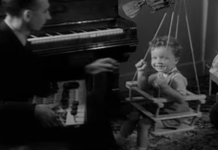The History Behind Origami Paper Folding
Leer en Español
Διαβάστε στα Ελληνικά
These days, origami is everywhere.
It’s the subject of children’s books like Sadako and The Thousand Paper Cranes. It’s being displayed in museums as art. It’s even being used as an educational tool to help students learn fractions and problem-solving skills!
But what is the history of origami? How has it evolved over the years?
Read on to find out!
Where And How Origami Started
Even the word Origami has an interesting history behind it. It’s actually made from two Japanese words: “Ori,” which means “fold,” and “kami,” which means “paper.”
It’s a word that defines itself!
The art of origami arrived fairly shortly after paper began to be more available worldwide. Around the 6th century, monks began to bring paper to Japan.
However, as paper was still rare (and therefore expensive!) origami was mainly used in religious ceremonies.
Origami was used in wedding ceremonies, where folded butterflies symbolized the bride and groom. It was also folded into good-luck symbols that were worn and given by the Samurai, in the hopes of staying safe in battle.
It even played a part in ancient Japanese legends. For example, many ancient folktales tell stories of folded birds that took flight, transforming into real birds.
Origami: The Next Steps
Of course, it didn’t take long for a global interest in origami to develop.
In the late 1400s, origami began to spread to Europe. Here, the folding techniques and created objects were also put to use in daily life.
It was popular in Europe to fold small boxes to hold jewelry or other lightweight items, or even to deliver private messages and letters!
Interestingly, we may owe much of what we know today about origami to kindergarten. The so-called “Kindergarten System” was created at the start of the 19th Century to help young children learn life skills, and to ease them into an educational setting.
The founder of the Kindergarten System, the German-born Friedrich Frobel, saw that paper folding and binding could help young children to learn valuable coordination and motor skills.
The reality is that many of the earliest kindergarten curriculums were filled with lessons in origami!
More and more European countries began to adopt Frobel’s Kindergarten System, and origami spread rapidly. In fact, the tiny packs of brightly-colored origami paper that we all first learned to fold on are a direct result of the Kindergarten System’s focus on origami.
Of course, as the idea of kindergarten spread so did origami.
What’s Next For Origami?
Today, there are classes, societies, and even YouTube videos all dedicated to sharing the art of origami with as many people as possible.
Origami never stops evolving, and new techniques are being invented all the time. An especially popular one is called “wet-folding.” Folders will lightly dip their paper into water and fold it. This helps the paper to hold its shape for even longer.
What will they think of next? Only time will tell.
To learn complex folding techniques, to get ideas from the experts, or just to be inspired by the intricate art form of origami, always keep your eye out for industry websites, museum exhibits, and video tutorial channels.










